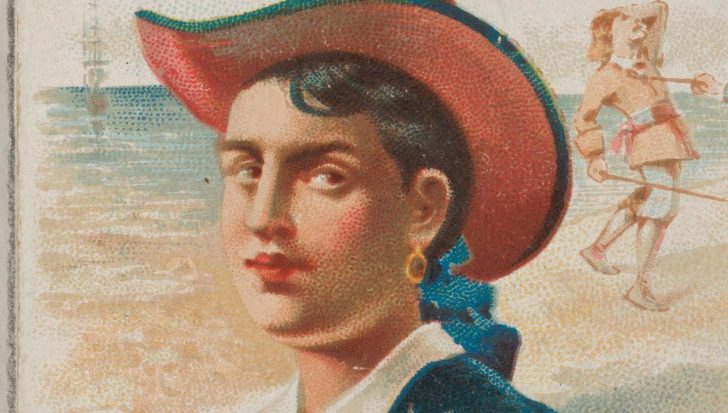Most people think they have heard it all when it comes to historical figures. You know the usual line-up: Washington, Cleopatra, Churchill. But history is full of legends who barely made it into the footnotes.
These six names? You probably never heard them in history class, but they lived louder, stranger, and braver than most.
Grace O’Malley
Grace O’Malley was not your typical 1500s lady. This Irish noblewoman turned pirate ran fleets, led sea raids, and controlled parts of the west coast of Ireland like a boss. She did it all while British forces tried to crush her clan and her way of life.

The Bohemians / Grace O’Malley once marched into the court of Queen Elizabeth I, refused to bow (because they were equals, she said), and walked out with her lands restored.
Two queens. One standoff. And Grace didn’t blink. Most historical figures don’t carry swords and command ships, but Grace did both.
Agne Sampson
In 1591, Agne Sampson—AKA Agnes Sampson—was accused of witchcraft during the infamous North Berwick witch trials in Scotland. Why? Because she was smart. She was a healer and a midwife, and she knew her herbs better than any doctor in town.
They tortured her for answers she didn’t have, but even after they shaved her head and humiliated her, she stood firm. Agne used knowledge, not magic, to help people.
Carlos Finlay
Carlos Finlay cracked the code on yellow fever in the late 1800s. While others guessed and stumbled, this Cuban doctor said, “Hey, maybe it’s the mosquito.” People laughed. He kept pushing.
Years later, they realized he was right. His theory helped save thousands of lives and changed how we fight disease. Still, most credit went to others. He wasn’t a headline name, but Finlay’s work laid the groundwork for modern epidemiology. Historical figures like him show how genius often gets ignored until it is too obvious to deny.
John Dee
John Dee was Queen Elizabeth I’s personal advisor, but not in the way you think. He wasn’t giving speeches or signing laws. Dee was into astrology, math, and maybe even magic. He said he could speak to angels using special mirrors and symbols, and people believed him.

The History Guy / Queen Elizabeth I’s personal advisor, John Dee, was a mathematician, astrologist, and magician.
Was he a genius or just good at talking? Hard to say. But he shaped England’s future using charts and stars, not swords.
Elizabeth Freeman
Before the U.S. Constitution was even dry, Elizabeth Freeman did something bold. In 1781, she took her Massachusetts enslaver to court and said the new state laws meant she should be free. The court agreed.
Her case helped end slavery in Massachusetts. She didn’t wait for permission or praise. She used the law as her weapon. Historical figures like Elizabeth didn’t just live through change; they caused it. And she did it with zero backup, just brains and bravery.
Sargon II
Sargon II ruled Assyria in the 700s BCE. He built cities, expanded empires, and rewrote power in the ancient world. Yet history mostly forgot him. For a long time, people even thought he was fake because records of him had vanished.
Then, his palace was found buried in Iraq, with walls covered in stories of his wins. It turns out he was real and pretty epic. Sargon II proves that some of the strongest historical figures got buried by time, not because they failed but because history picked favorites.
